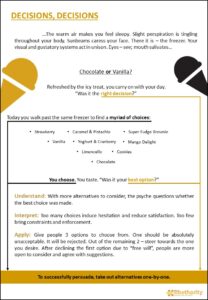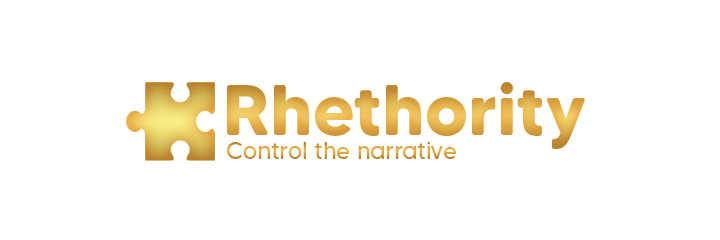DECISIONS, DECISIONS
Picture this: the warm air makes you feel sleepy. A gentle perspiration tingles across your skin as sunbeams caress your face. Ahead, you spot it … the freezer. Your senses align; your eyes see, your mouth waters in anticipation.
Chocolate or vanilla?
Refreshed by the icy treat, you carry on with your day. A fleeting thought crosses your mind:
“Was it the right decision?”
…
Fast forward to today. You pass by the same freezer, only this time it presents a myriad of options:
- Strawberry
- Caramel & Pistachio
- Vanilla
- Yoghurt
- Cookies
- Chocolate
- …
You choose, taste, and reflect. This time, the thought grows louder:
“Was it my best option?”
The Paradox of Choice
With more alternatives to consider, the psyche becomes overwhelmed. A simple decision now feels riddled with complexity. The result? Hesitation, second-guessing, and reduced satisfaction with the choice you made.
This phenomenon, known as the paradox of choice, reveals an important truth: having too many options can be just as problematic as having too few. While limited choices may feel restrictive, an abundance of options can paralyze decision-making and leave you questioning your judgment.
A Strategy for Better Decisions
How can this insight into human behavior be applied? The key lies in controlling the number of choices presented to others. When offering choices, give three options:
- One option should be entirely unacceptable. It will be rejected.
- Out of the remaining 2 – steer towards the one you desire. After exercising their “free will” to reject the first option, people are more open to consider and agree to suggestions.
Whether persuading someone to choose a product, adopt a new idea, or support a decision, reducing alternatives can simplify the process and increase satisfaction.
When presented with too many choices, people tend to overanalyze, hesitate, and experience regret after deciding. By carefully curating the options, you eliminate these pitfalls and create an environment where decisions feel effortless and satisfying.
Mastering Choice Architecture
Life is full of decisions, both big and small. While having options is a hallmark of freedom, too many can weigh us down.
To successfully persuade, limit hesitation. The beauty of this method lies in its simplicity: fewer options lead to better decisions and a greater sense of agency.
To successfully persuade, take out alternatives one-by-one.

